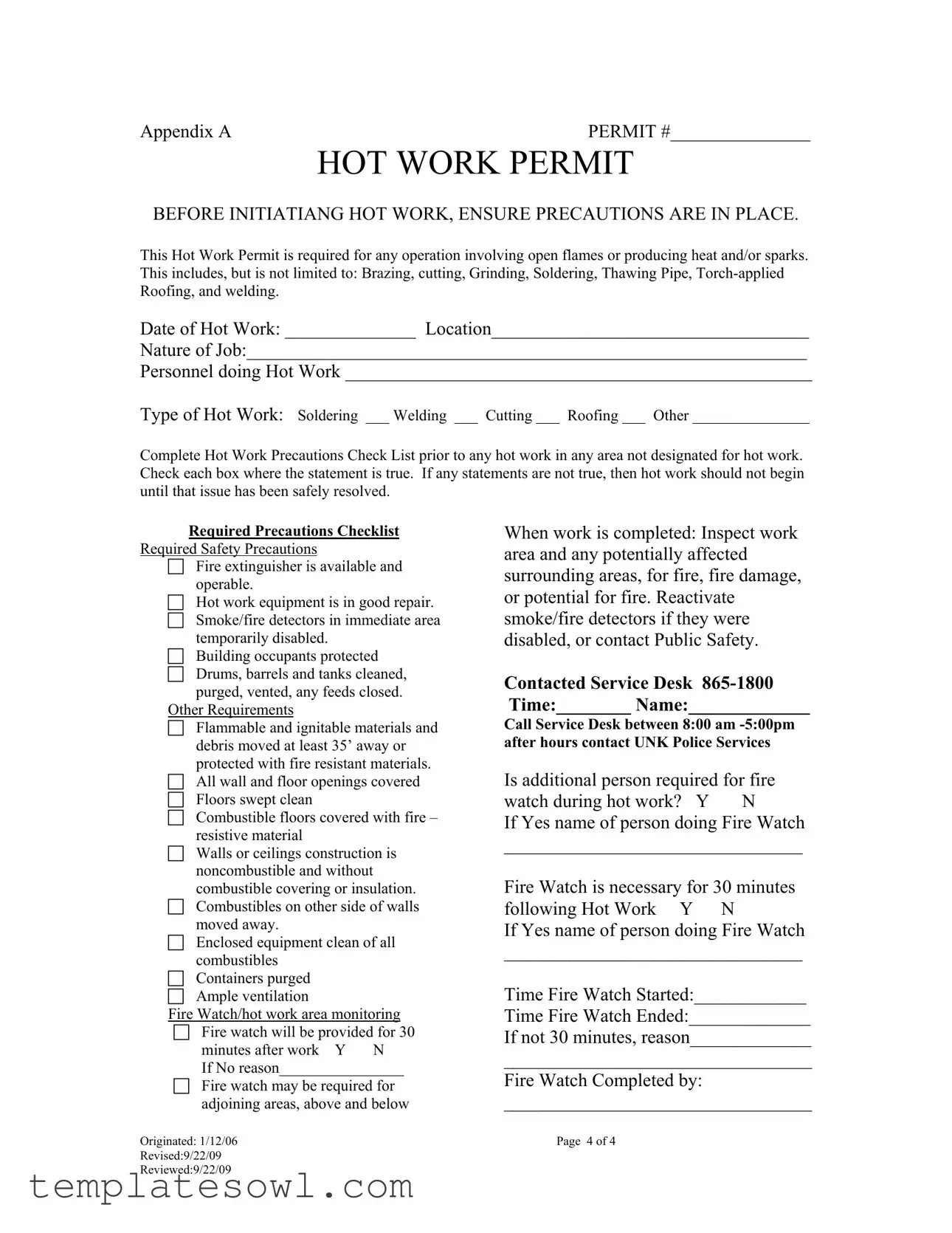What is a Hot Work Permit?
A Hot Work Permit is a formal document required before starting any activity that involves open flames or creates heat and sparks. This includes processes like welding, cutting, and more. It serves to ensure that necessary safety precautions are taken to prevent fires and related hazards.
When do I need to obtain a Hot Work Permit?
A Hot Work Permit is necessary any time you're engaging in activities that produce heat or sparks in areas not designated for hot work. Whether it’s performing maintenance or construction tasks that involve brazing, soldering, or grinding, obtaining the permit is essential for safety compliance.
What types of hot work require a permit?
Various activities necessitate a Hot Work Permit. These include but are not limited to: welding, cutting, grinding, soldering, thawing pipes, and torch-applied roofing. Whenever your work involves the risk of creating sparks or open flames, you should secure a permit.
What precautions must be checked before starting hot work?
Before commencing any hot work, you must complete the Required Precautions Checklist. This checklist includes verifying that a fire extinguisher is available and functional, ensuring hot work equipment is in good condition, and confirming that flammable materials are moved a safe distance away. If any precaution is not met, the work cannot begin until the issue is resolved.
Is a fire watch required during hot work?
Yes, a fire watch is typically required during hot work and for 30 minutes after the work is completed. The individual assigned to the fire watch is responsible for monitoring the area for any signs of fire and ensuring that safety protocols are followed. Make sure to document the time the fire watch starts and ends.
What should I do if I discover a fire or potential fire hazard?
If a fire or potential fire hazard is discovered after completing your work, it is crucial to inspect both the work area and any surrounding areas for fire risks. Reactivate fire safety systems like smoke detectors if they were turned off during the job. If there's immediate danger, contacting Public Safety is vital.
Can I disable smoke detectors during hot work?
While it may be necessary to temporarily disable smoke or fire detectors in the immediate area to prevent false alarms, this should be done with caution. It is essential to reactivate these systems immediately after the work is finished or notify Public Safety to ensure overall safety.
What should I include in the Hot Work Permit application?
Your Hot Work Permit application should detail the date of the hot work, the specific location where the work is taking place, the nature of the job, and the name of personnel conducting the work. Also include the type of hot work being performed and ensure that all safety precautions are checked off.
How can I contact support if I have questions about the Hot Work Permit?
If you have questions regarding the Hot Work Permit, you can contact the Service Desk at 865-1800 between 8:00 am and 5:00 pm. For any concerns after hours, reaching out to UNK Police Services is recommended for immediate assistance.
